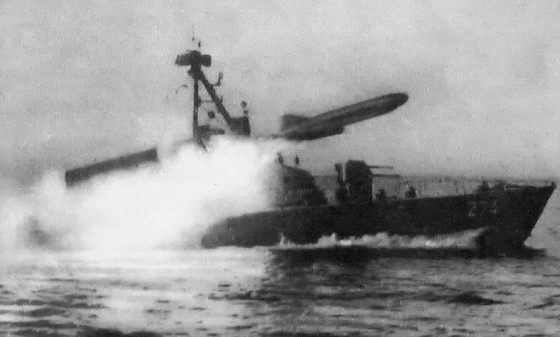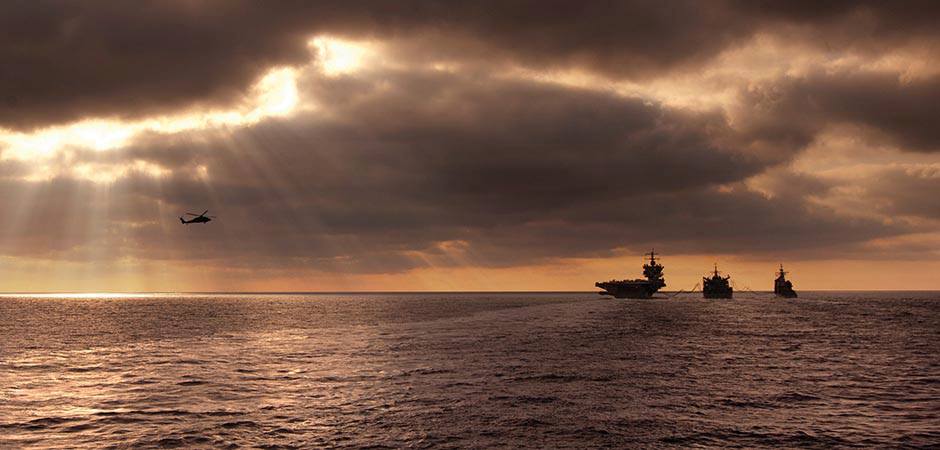SECDEF and the Doctrine of Sufficiency
These past few weeks SECDEF Gates has turned to the perennial question of “how much is enough?’ and in the process, has on a couple of occasions called out Navy for its overwhelming capacity in certain areas – subs and aircraft carriers immediately come to mind. That carriers get highlighted is not surprising – they are after all, a large, highly visible symbol, representative of the collective industrial and military power of the United States. It is perhaps fittingly coincidental that this discussion falls between the anniversaries of the Battle of the Coral Sea and Midway – signatory engagements that both changed the direction of the war and sealed the role of the aircraft carrier and her embarked airwing as a preeminent weapons system (along with the submarine) in taking back the Asian Pacific areas invaded and occupied by the Japanese empire.Â
It also guaranteed that the carrier would have a huge “bullseye†on it post-war as the budgeters’ drew their long knives. Yet it was the aircraft carrier that less than half a decade later, provided the needed close air support to UN forces in the face of the North Korean onslaught, when the airfields in Korea were overrun and the “safe†fields in Japan and Okinawa were too far away to provide the kind of overhead persistence carrier aircraft could provide until land-based fields could be secured and more aircraft brought in.
 I bring this up as a preamble to highlighting an “interesting†comparison made of the numbers we maintain vs. “other countries” – like these lines from the 3 May speech before the Navy League Sea-Air exposition:
In assessing risks and requirements even in light of an expanding array of global missions and responsibilities everything from shows of presence to humanitarian relief some context is useful:
- The U.S. operates 11 large carriers, all nuclear powered. In terms of size and striking power, no other country has even one comparable ship.
- The U.S. Navy has 10 large-deck amphibious ships that can operate as sea bases for helicopters and vertical-takeoff jets. No other navy has more than three, and all of those navies belong to our allies or friends. Our Navy can carry twice as many aircraft at sea as all the rest of the world combined.
- The U.S. has 57 nuclear-powered attack and cruise missile submarines again, more than the rest of the world combined.
- Seventy-nine Aegis-equipped combatants carry roughly 8,000 vertical-launch missile cells. In terms of total missile firepower, the U.S. arguably outmatches the next 20 largest navies.
- All told, the displacement of the U.S. battle fleet a proxy for overall fleet capabilities exceeds, by one recent estimate, at least the next 13 navies combined, of which 11 are our allies or partners.
- And, at 202,000 strong, the Marine Corps is the largest military force of its kind in the world and exceeds the size of most world armies.
All interesting and makes for nice bits for the 30-second news report of preservation of column inches – but it lacks context. For example – at a recent press conference for MDA’s FY2011 budget, the Agency’s Executive Director indicated a total buy of 430 SM-3 across the FYDP extending into FY16. That’s a pinch over 5% of the 8,000 VLS launchers SECDEF referred to, and yet if you tally up open source numbers of SRBM/MRBMs, you can find in some theaters commanders are facing a ballistic missile threat on the order of 500-1000 missiles. In one theater. Additionally, not all Aegis ships are configured for BMD, which further limits flexibility in deploying forces and increases the demand signal for the ships that are configured.
Subs – I’ve yet to hear anyone looking at the growing threat posed by regional powers deploying AIP subs armed with the latest generation of supersonic cruise missiles (SS-N-27/Klub) that we have too many SSNs. And carriers? Again, show me a COCOM who hasn’t placed a significant demand signal on carrier generated sorties over the past 7 years that thinks we have too many carriers.
The rub here, and again to put this in context, is that a simple 1:1 map of capabilities with other nations isn’t realistic in that it ignores a fundamental geographical principle – as an island nation (globally speaking) we have greater distances to surmount, lack access to interior lines of communication and have to bring our logistics with us. Nothing new here – the principles are the same today as they were in 1933 when Navy finally realized the effect of the Washington Navy Treaty had on the fleet and our warplanes – that instead of a dash and smash against the Japanese to defend the Philippines, we were going to have to take a 3-5 year slug it out approach to work our way back across the Pacific.
While it is true that post-Cold War our Navy has decreased in size while others have followed suite – still others are reversing that trend. Not to repeat here as it has been and will be discussed at length at other times and venues, but it is no secret that China, for example, is growing its navy and Russia has recently announced its intent to plus up its navy in terms of numbers and blue-water capacity (though there are doubts based on several factors, industrial capacity and capability being but one, that it will be able to do so). Still, it would be erroneous for us to “build down†to their numbers since, as either regional powers and/or occupants of the greater Eurasian continent, the imperatives that drive their strategies, their force structure and their operational construct are different than ours.
So what would be a construct for force sizing? Navies in particular are hard to quantify in one neat measure. In the past we’ve used number of hulls, gross tonnage, etc. mostly in isolation and usually to our detriment. In another forum I participate in, there has been discussion of other measures, like dwell time. It seems to me that measure may be the better measure. If, for example, we cite all the bi- and multi-lateral engagements and agreements advocated by the 2007 Cooperative Strategy for Seapower in the 21st Century, we might well find ourselves in a situation where our deployed-to-in-port ratio stands at 1:1, which we historically know is unsupportable. Perhaps that measure (dwell time) could be further refined, taken another page from SECDEF’s speech, and apply a tonnage modifier, being as how it has been said that a warship’s displacement is the best measure of its capability[1]. In that case, the requirement would follow from the COCOM requirements and warplan constructs (or use the force planning constructs in the QDR). One possible hint may be in the (still) forthcoming NOC, which may be released, though in classified form, in the coming week.Â
The simple fact of the matter, however, is that SECDEF has set his sites on making a resource constrained budget and has in the process, identified initial areas to be explored – and that there apparently will not be any sacred cows left untouched (e.g., personnel costs, FO/GO billets). Unlike ships (or aircraft) billets can be re-added downrange in a quicker manner than say reconstituting a class of ships or mission capability and hence, as a service, Navy needs to ensure it is entering the forthcoming discussions knife fight well prepped with a force sizing construct that yields a force economical not only in dollar cost to build and support, but in mission capabilities.Â
Interesting times ahead indeed for all…
[1] Till, Geoffrey. 1975. Biggest or Best: The Navy and its Great Ships. The RUSI Journal. 120(3):54-58. < http://www.informaworld.com/10.1080/03071847509420851 >. (accessed 11 May 2010).




One Comment
Comments are closed.